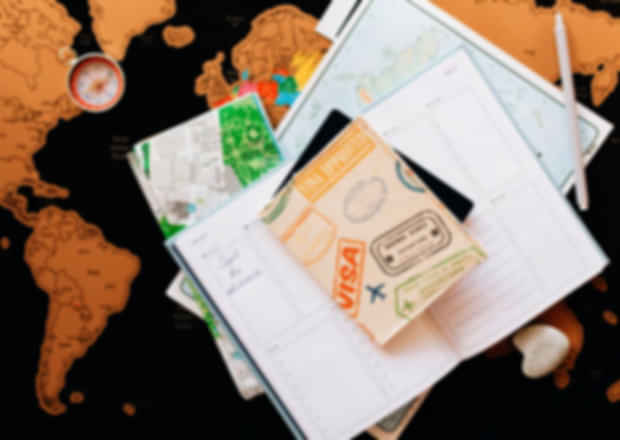Difference Between Visa and Passport
Author
Akshaya Manoharan
Updated Date
January 23, 2025
Read
3 minutes

If you are planning your first international trip, the two essential documents you often hear about are the passport and the visa. Both of these are crucial for your trip and serve distinct purposes. Understanding the differences and their importance is very important to streamline your travel preparations. This blog will help you understand what these documents are and how you can differentiate between the two.
What is a passport?
A passport is an identification document that certifies the nationality of a person. This is issued by the government to allow it’s people to travel outside of their country and return home safe. Passports typically contain personal information like the holder’s name, date of birth, photograph, and signature.
Key Features of a Passport:
- Acts as an identification document.
- Required for international travel.
- Contains pages for visa stamps and other travel endorsements.
- Issued for a specific validity period, usually 5 or 10 years.
What is a visa?
A visa is a stamp that is placed on a passport, which is considered an entry and exit allowance to the country you are visiting. Visas can be for different purposes, such as tourism, business, education, or work.
Key Features of a Visa:
- Permission to enter a foreign country.
- Specifies the duration of stay.
- Can be single-entry or multiple entry.
- Issued for various purposes (tourist, business, student, etc.).
Comparison between a Passport and a Visa
| Feature | Passport | Visa |
| Issued By | Home country government | Foreign country government or consulate |
| Purpose | Identification and proof of citizenship | Permission to enter or stay in a foreign country |
| Validity Period | Typically 5 to 10 years | Varies (could be for days, months, or years) |
| Usage | Required for international travel | Required for entry into certain countries |
| Contains | Personal details, photo, and signature | Entry permissions, conditions, and validity |
Detailed Differences
1. Issuance and Authority
- Passport: Issued by the traveler’s home country. For example, an Indian passport is issued by the Government of India.
- Visa: Issued by the country you wish to enter. For example, a US visa is issued by the US embassy or consulate.
2. Purpose
- Passport: Primarily serves as an identification document and a travel document.
- Visa: Serves as a permission slip to enter or stay in a foreign country for a particular purpose.
3. Validity
- Passport: Typically, valid for 5 to 10 years, after which it needs renewal.
- Visa: Validity varies depending on the issuing country and the type of visa (tourist visas might be valid for 30 days, while work visas could last for years).
Key Points to Remember
- You cannot travel internationally without a passport.
- A visa may not always be necessary, depending on international agreements between countries.
- Some countries offer visa-on-arrival or e-visa services, simplifying the process.
Understanding the differences between a passport and a visa is crucial for smooth international travel. While your passport serves as a universal travel document and proof of identity, a visa is specific to the country you plan to visit and the purpose of your visit. Always check the visa requirements for your destination well in advance of your trip.
Recommended articles for you
Discover Packages


Need help in planning?
Talk to our Travel Experts






























